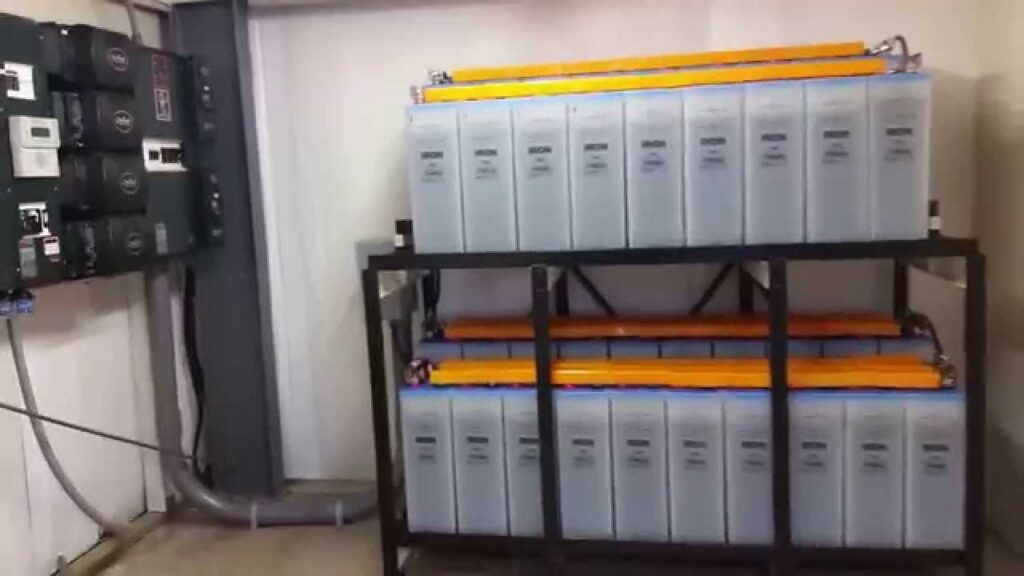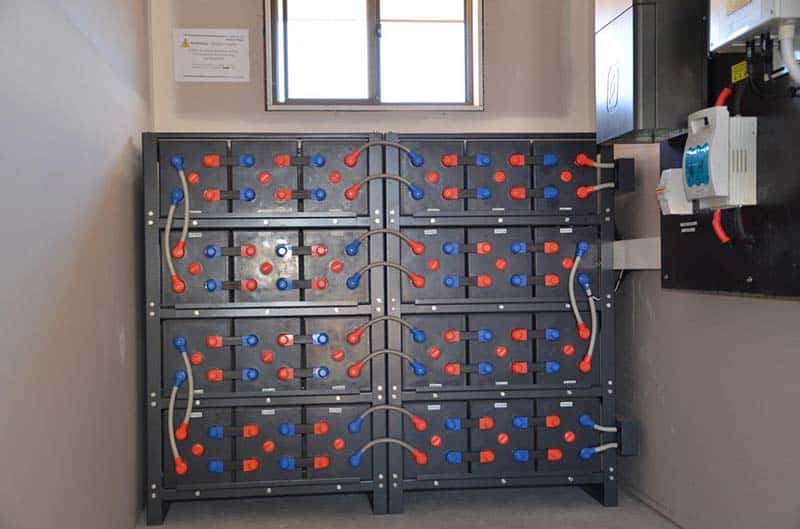The Top 10 Best Solar Batteries
“We’ve compared the best solar batteries available at the most competitive prices.”

Best Solar Battery Reviews
There are many types of solar batteries. Generally, the surface area is large because it is more efficient than a small battery. For example, there are several panels on roofs or in fields that convert sunlight into electricity to power buildings and homes. Most solar batteries are made of silicon. Silicon is an excellent semiconductor, which makes it possible for electricity to pass through the device easily.
However, silicon is very fragile. It can be melted or broken, and it also erodes quickly. So solar batteries need to be protected from the weather and sunlight. Solar batteries are more expensive than other forms of energy because they require so much surface area. It’s surprising that we still use them in the face of fossil fuels, which are cheaper and easier to make. But yet, solar batteries do have advantages. For example, they’re very durable and last for decades without maintenance. However, it seems that we will need to develop a new type of solar battery soon. Fossil fuels are in danger of running out, and solar batteries take too long to build.
- Cycle life (80%DOD): 2500
- Shell Material:Plastic
- Rated capacity: 280Ah
- Rated Voltage: 3.65V
- Nominal voltage: 3.2V
- Cycle life (80%DOD): 4000
- Shell Material:Plastic
- Rated capacity: 200Ah
- Rated Voltage: 3.65V
- Nominal voltage: 3.2V
- Cycle life (80%DOD): 2000
- Shell Material:Plastic
- Rated capacity: 200Ah
- Rated Voltage: 3.65V
- Nominal voltage: 3.2V
- Cycle life (80%DOD): 4000
- Shell Material:Plastic
- Rated capacity: 200Ah
- Rated Voltage: 3.65V
- Nominal voltage: 3.2V
- Cycle life (80%DOD): 2000
- Shell Material:Plastic
- Rated capacity: 200AH
- Rated Voltage: 14.6V
- Nominal voltage: 3.2V

How Do The Best Solar Batteries Work?
On a more serious note, solar batteries are not really ‘solar’ in the traditional sense. Solar panels (which generate electricity) must face directly towards the sun to work efficiently, and therefore they are often installed on rooftops or other areas facing south.
The energy is captured from sunlight and converted into electricity, which can be used for heating, cooling, lighting, etc. Solar batteries, on the other hand, are actually ‘energy storage’ devices. They do not generate electricity but store it for later use.
In the past, they had to be extremely large and heavy because there was no efficient way of storing electricity. Nowadays, though, with new technologies like lithium-ion batteries (which are much smaller), storage is much more feasible. Solar batteries are not a new concept and have been around for some time.
They were first used in the 1970s when oil prices were skyrocketing. They are increasingly popular now because of the growing concern for climate change and the increasing demand for renewable energy.
Although solar batteries are handy, they cannot be used by everyone. For example, if you live in a city or suburb and your house is not connected to the grid (which most homes are), it is unlikely that you will install solar panels.
The Batteries Designed for Solar Batteries are Engineered Differently.
Solar batteries are designed to collect solar energy from the Sun and convert it into electricity. There are two types of solar batteries: crystalline silicon-based, which usually has an efficiency of about 16%, and thin-film amorphous silicon-based with efficiencies up to around 20%. If you want to know about the design of solar batteries, I would say that there are three main components involved: photovoltaic cells, a battery, and an inverter.
The photovoltaic cells are the building blocks of a solar battery. The efficiency of the design depends on the type you use, but typically they can convert around 15-20% of sunlight into electricity. The battery is the component that stores energy for later use. There are two main types of batteries: lead-acid and lithium-based. The inverter is the component that converts electricity from direct current to alternating current so that household appliances can use it. Inverters come in two main varieties: mono- and polyphase.

How Long do Solar Batteries Last?
Solar battery’s charge holds for several years. The reason is simple, a charged battery stores electricity into its cells until the electrical current discharges by either using it or storing it in an external device.
The duration of charge can be determined by the amount of power used and the time between uses. For example, if a solar battery is fully charged in one hour that means it will last for 60 hours or two days. The duration of charge can also be determined by how many cell phone charges it takes to discharge the battery.
This study is based on one full solar battery charge and then using a small amount of power from that stored electricity. When a solar battery is fully charged, it takes approximately 1 hour to discharge the entire amount of energy stored into an electrical device.
The duration of the charge can be determined by using this information. That is the key, as there are many ways to charge a solar battery. For example, a solar battery can be fully charged within an hour and then used to power one electrical device for 1 hour or 1/2 of the capacity. This means that if we charge it in two hours, we will get 2 hours out of it.
Where Are Solar Batteries Mostly Made?
Many companies manufacture solar panels and those who don’t buy them from other manufacturers. Solar panel manufacturing occurs in the United States, China, Japan, and Germany. Most people don’t realize that solar panels have been around for a very long time. Bell Laboratories invented the first solar panel in the year 1954. In general, solar panels are manufactured in an automated assembly line.
The workers that make them have a rather dull job, but they get paid very little. Solar panels are manufactured in a large factory, where the machines and humans work together to produce solar panels. The first step is that the glass is cut into squares. The panels are assembled in a device that imprints the wiring on them. It’s very efficient, and robots do most of it.
The solar panels are then tested for durability and efficiency. If they pass those tests, they are sent to other countries.

How Do Solar Batteries Work?
Well, it isn’t effortless. The sun is a massive fusion reactor in the sky. It gives off energy in the form of photons. This energy travels to Earth and is absorbed by molecules such as water, which can store this energy.
Water is a complex molecule that consists of two hydrogen atoms and one oxygen atom. When light hits the water, it causes the electrons in the water to vibrate. Electrons amplify this vibration within the water turning into neutrons due to instability caused by high energy.
The energy transferred from the sun to water is directly proportional to how much light hits it. If you were to take a large container of water and block out some of the light that would hit it, there would be fewer vibrations in the molecules due to this lack of solar radiation.
If there is an excess of water, the vibrations cause the electrons to destabilize further. This causes more neutrons to be formed and degrades into helium atoms, which then escape from the container.
If the container is not at room temperature, then some of the neutrons may be absorbed by surrounding molecules. The energy gained this way can be used to power a device or battery.
- Cycle life (80%DOD): 2500
- Shell Material:Plastic
- Rated capacity: 280Ah
- Rated Voltage: 3.65V
- Nominal voltage: 3.2V
- Cycle life (80%DOD): 4000
- Shell Material:Plastic
- Rated capacity: 200Ah
- Rated Voltage: 3.65V
- Nominal voltage: 3.2V
- Cycle life (80%DOD): 2000
- Shell Material:Plastic
- Rated capacity: 200Ah
- Rated Voltage: 3.65V
- Nominal voltage: 3.2V
- Cycle life (80%DOD): 4000
- Shell Material:Plastic
- Rated capacity: 200Ah
- Rated Voltage: 3.65V
- Nominal voltage: 3.2V
- Cycle life (80%DOD): 2000
- Shell Material:Plastic
- Rated capacity: 200AH
- Rated Voltage: 14.6V
- Nominal voltage: 3.2V
Read Solar Battery Reviews Before You Buy Them(to Avoid Problems!)
Soon, solar battery lifespan will not be a problem. Most companies have already solved it. For example, Tesla offers replacement batteries for their cars, which can last up to 500k miles before needing replacement at an affordable price. In the far future, solar batteries may not even need replacing. When companies such as Tesla begin to expand into space travel and living on other planets, it will be necessary to have in-space energy production.
Solar batteries are one of the most efficient energy sources in space and will be used to power everything from on-planet colonies to interstellar ships. However, solar batteries may not even last that long. As technology improves, likely, we will no longer need solar batteries at all. Since we will be moving into space and possibly living on other planets like Mars or the moon, solar batteries will likely become obsolete entirely. Instead of solar power, we may have energy production directly from our planet’s crust.